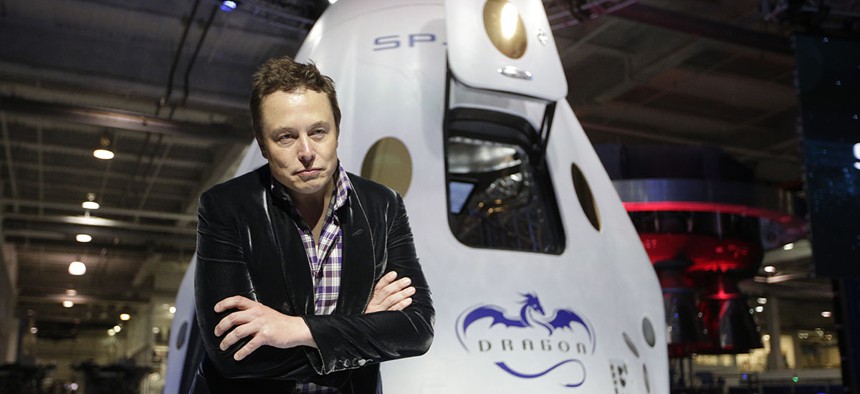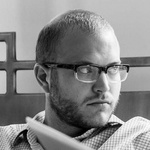SpaceX Will Fly its First 'Flight-Proven' Rocket Tonight to Make Space History

Elon Musk, CEO of SpaceX Jae C. Hong/AP
“We’re at the edge of quite a significant bit of history here.”
Kennedy Space Center, Florida
Even before dawn, workers streamed past security into the U.S. launch complex here, intent on the routine business of the spaceport. But tonight’s launch is out of the ordinary. It’s the next milestone to fulfilling the promise Elon Musk set for his company SpaceX: to dramatically lower the cost of access to space by reusing rockets multiple times.
To wit, the Falcon 9 rocket you can watch launch a 5.5-ton European communications satellite 36,000 km (22,000 miles) into the sky tonight is taking its second trip to orbit. Just under a year ago, it carried supplies to the International Space Station and returned to earth, landing on a drone ship in the Atlantic Ocean. It will be the first orbital booster rocket to make this journey twice.
You can watch it happen sometime during a two-and-a-half-hour launch window beginning at 6:27 p.m. EST (10:27pm GMT).
“We’re at the edge of quite a significant bit of history here,” says Martin Halliwell, the chief technology officer of SES, the Luxembourg firm whose satellite, SES-10, is being carried into space. His company is taking a big risk on this launch with a piece of hardware costing hundreds of millions of dollars. (Yes, it is insured.)
But SES also took a risk by being the first company to launch a commercial satellite into a high orbit with a SpaceX rocket in 2013, and its two launches with the company saved it something like $50 million. It also received a special discount for this flight that likely saved it more than $60 million relative to other options. SES has four contracts with SpaceX for future launches including this one.
“I recall exactly the moment when our engineers came back from the SpaceX factory,” Markus Payer, SES’ top spokesperson, told Quartz of early visits to assess SpaceX’s technology. “They saw something they didn’t think would exist.”
Pointing at the rocket on the launch pad, Payer emphasized that “this has to look exactly like a new rocket, no compromise, exactly the same criteria apply” to “flight-proven” (i.e., used) rockets as brand new ones.

From the company’s early days developing a rocket to carry cargo for NASA to its long-term ambitions of bringing humanity to Mars, SpaceX engineers zeroed in on the key challenge of making it less costly to get to space: Stop throwing away the rocket each time you use it, and reuse all that expensively made machinery.
But identifying a problem is not the same as realizing its solution. Previous generations of rocketeers had considered this, but found that a reliable system was too expensive to build. The Space Shuttle was reusable, though it required external solid fuel boosters and a disposable fuel tank, but it cost more than expected to refurbish after each flight.
Those costs daunted private firms thinking of investing in reusability, and with only a dozen or so launches in the U.S. each year, there didn’t seem to be the demand to bring the cost down. SpaceX is essentially a bet that if you build a lower-cost rocket, customers will come—and so far, it is a bet that has paid off.
Reusability required years of work Starting with the “grasshopper,” a miniature version of the company’s Falcon 9 rocket, the company developed the know-how to control the 14-story tall, 20-ton first stage of the rocket as it returns from more than 100 km above the Earth. The company needed to develop the hardware for landing–special grid fins and unfolding landing legs—and even more importantly, the software that gave the rocket—really, a robot—the ability to fly itself down.
But despite landing seven different booster stages since the first successful return in December 2015, the technology is not proven until it can actually be reused regularly. Today’s test is the first step toward establishing that rhythm.
“This has to become routine, and that is the breakthrough,” Payer says.
NEXT STORY: What It Takes to Make NASA’s Top Gun



